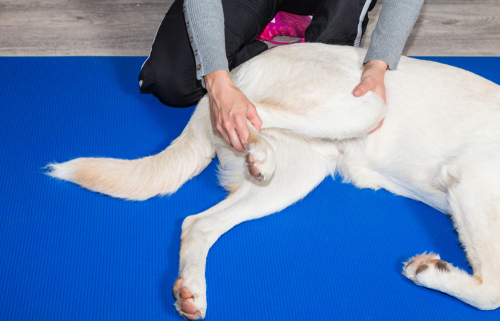Physical Therapy Exercises for Dogs
Physical therapy for dogs can be a huge benefit to help them recover quickly and effectively. It can also increase mobility, improve strength, and maintain overall health. Canine rehab can be done in a clinic setting or there are some dog therapy exercises which can be completed at home. Both are a big advantage to the well-being of your four-legged friend. We will talk about some of the most common physical therapy exercises for dogs in this article.
Massage – A light massage up and down your dog’s body will improve circulation and increase muscle tone. Place your dog on their side while you rub each major muscle group. Keep in mind that this isn’t supposed to be a deep tissue massage. Be gentle.
Toe Squeeze – The goal of this exercise is to improve the chances for your dog to regain “deep pain sensations” or feeling in their limbs and paws. All you need to do is pull or squeeze the toes on each affected paw. Your objective is to see if your dog’s body can relearn the natural reflex response.
Passive Range of Motion – Start the range of motion technique with your dog lying on their side. Gently flex and release each toe on one limb. Next, slowly flex the leg out and then into the hip. Finally, rotate the limb in a circular motion. Once you have finished with one limb, move on to the next.
Strength Training – This exercise helps with balance, weight-bearing and strengthening the core. Lie your dog on their side while you gently grab the limbs. Roll the body from side to side. If your dog does well with this, add a large balance ball to the routine. When you implement balance exercises, your dog is strengthening their abdominal muscles.
Stand and Count – Have your dog stand up and time how long it takes before they need to sit or lie down. The goal is to slowly increase their standing time if they can tolerate it.
Keep in mind that the exercises which were mentioned above are only recommendations. As always, you will need to seek professional advice and care from your veterinarian or physical therapist. Many dogs won’t be able to accomplish some of these tasks, depending on their level of mobility at the time. Your goal as a pet owner is to ensure that your pet is living a pain-free and fun life.



